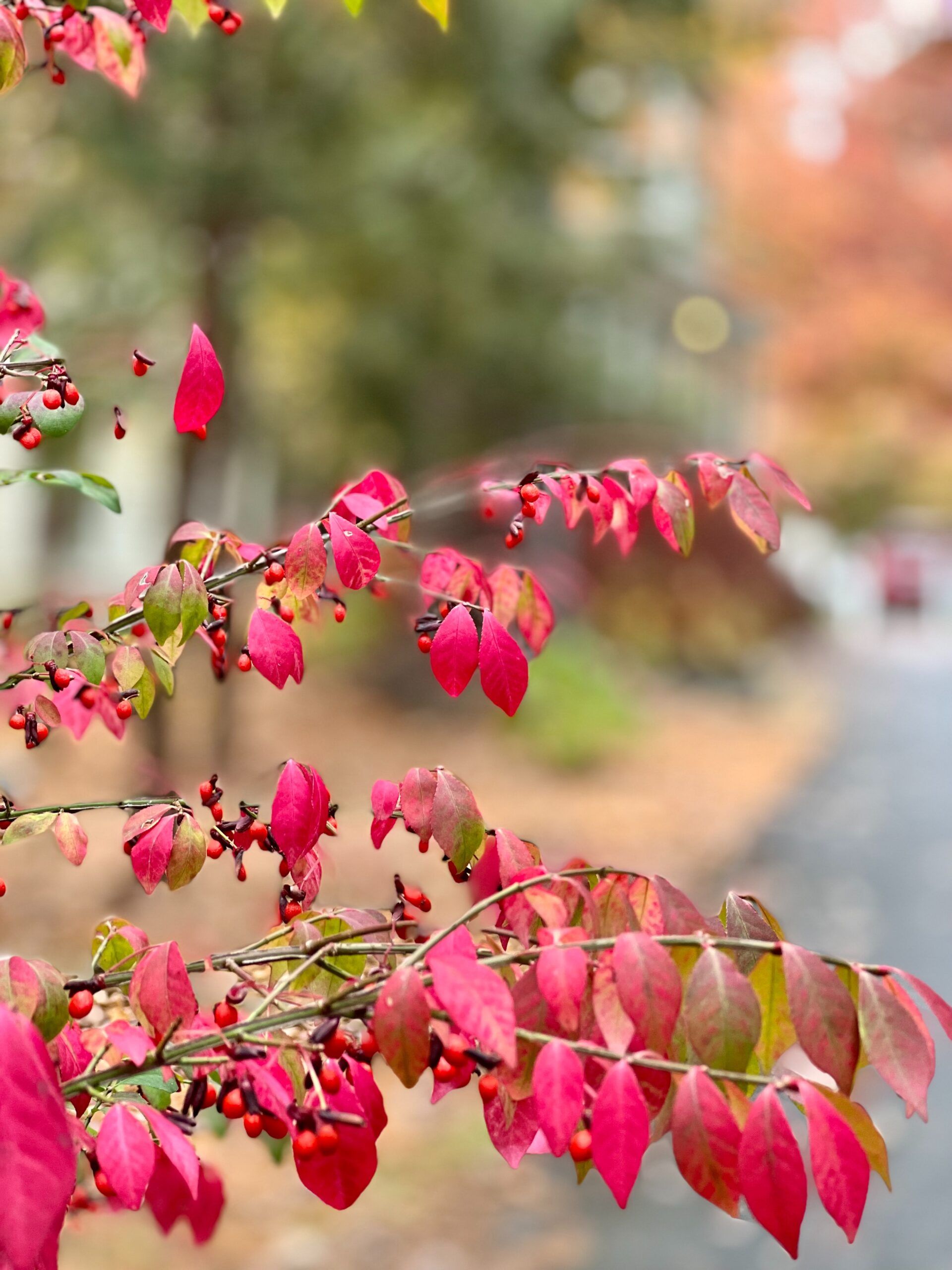Burning Bush Invasive Plant
In previous articles we have been discussing invasive species and plants. One example we mentioned is burning bush. Burning bush (Euonymus alatus) is a species of flowering plant native to central and northern China, Japan, and Korea. The plant is popular in landscapes for vibrant red foliage during the fall. However, burning bush is an invasive plant species that Pennsylvania nurseries are now prohibited from selling. The shrub was first introduced in the United States around the mid-1800s, and was later deemed invasive in the 1970s.
Burning Bush Appearance
Burning bush has a distinctive appearance with crucial aspects that can help homeowners and plant health care experts quickly identify the plant.
Size: The shrub typically grows around 15 to 20 feet tall and is often as wide or slightly wider than tall.
Leaves: The leaves have an elliptical shape, almost like a football, and are usually between 1 and 2 inches long but can be up to 3 inches long. Leaves reside on opposite sides of the branches and have smooth or finely-toothed edges or margins, which taper off at the tips.
Color: Notably, the leaves turn brilliant crimson in the fall (which is why the plant is called a “burning bush”). In the summer, the leaves are green to dark green.
Flowers: The green or green-yellow flowers have around 4-5 petals, each less than 1 inch across. Flowers begin emerging in early spring and bloom in May-June.
Fruit: Smooth, red-orange fleshy fruit appear within red capsules, which can make them blend in with the fall foliage. The berries ripen in the fall and are attractive to birds, who eat and spread the seeds.
Stems: The stems are vibrant green with distinctive raised, tan or brown corky ridges (often called “wings.”) These “wings” may follow the branch lengthwise or be whorled or twisted slightly, and their height varies.
Damage Caused by Burning Bush
While the distinctive red color appeals to homeowners, the burning bush is an invasive plant that can cause significant damage to landscapes. An important issue is that burning bush can create extremely dense thickets and complex root systems. These thickets and root systems crowd out many native plant species by taking up space, sunlight, and nutrients. This process causes the burning bush to overtake a landscape, reducing plant diversity.
What Makes Burning Bush an Invasive Plant

Burning bush has spread for numerous reasons. One of which is that due to its aesthetic appeal, homeowners were buying the plant from nurseries. However, as the damage the plant caused was more understood, the Pennsylvania Department of Agriculture designated the shrub as a noxious weed, preventing PA garden nurseries from selling the plant.
Another reason for the shrub’s spread is animals. As mentioned earlier, the fruits burning bush produces are appealing to birds, who, when eating the fruit, transport the seeds to new locations. In addition, birds pass the seeds together with other droppings, which are released into the soil, allowing new plants to grow.
In addition, burning bush has qualities similar to other invasive species that allow the shrub to spread quickly:
- Seed Production: Burning bush produces a large number of seeds.
- Self-Fertilization: Individual plants can contain male and female reproductive structures, allowing the plant to self-fertilize and create a whole colony of offspring.
- Vegetative Reproduction (Sprouting): When a burning bush stem is cut or broken, the plant will grow more branches to replace the broken ones.
- Predator Avoidance: No known natural predators feed on burning bushes, so the plant can keep growing and reproduce without any threat of predation.
Treating & Controlling Burning Bush
Plant health care specialists can use numerous control methods to mitigate or remove burning bush invasive plant populations, depending on the time of year and the conditions of the plant and landscape.
Foliar treatments occur during Mid-May to the onset of the plant’s fall color. A foliar treatment involves applying an herbicide directly to the leaves. Because the herbicide is applied to the plant leaves, this treatment option reduces the potential risk to other nearby plants because those plants do not absorb the mixture through the soil. Foliar treatment is especially good for landscapes with low to moderate plant density.
Another option is stem treatments. These steam treatments require an herbicide of a specific mixture applied to the plant. However, the mixture is applied to the stem or bark rather than the leaves in this instance.
A plant health care expert may recommend cutting or trimming the canopy for burning bush plants that are particularly large or dense. The plant can also be pulled from the ground, and the pulled plant (or cut stems) can be later chipped or burned. Cutting or trimming by itself can lead to resprouts. As a result, a plant health care expert will follow up with herbicide applications.
Contact Burkholder PHC for Invasive Plant Treatment & Removal
The burning bush invasive plant can overtake landscapes and prevent native species of plants from growing or blooming. As a result, we recommend a professional evaluation to help remove the plant and control any adverse effects. Our evaluation is free, and the proper treatments can help improve the health of your landscape plants. Contact Burkholder PHC today for a free consultation.

